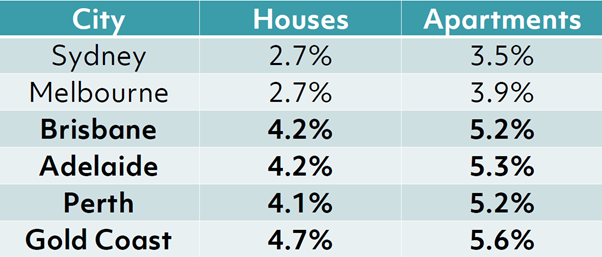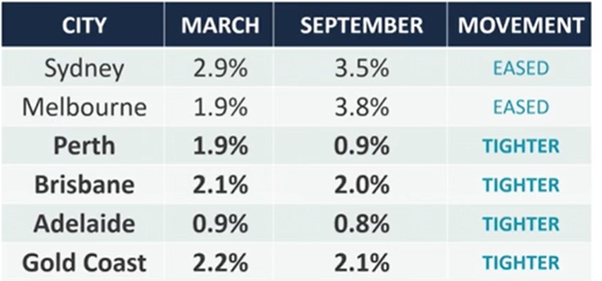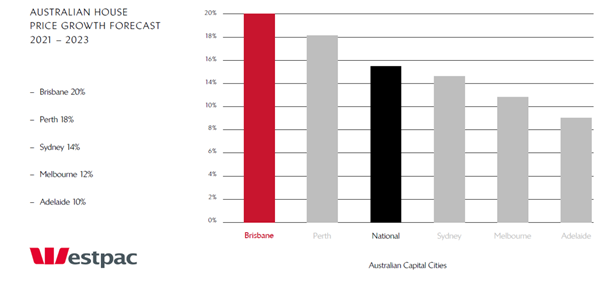With almost 60% of people who lost their jobs in April now back at work, the new budget plans to outline Australia’s economic recovery route during and post covid-19, including a series of policies to boost Australian economic markets for the foreseeable future.
Whether you’re an experienced investor, first home buyer, or simply looking for more information, this article will outline all you need to know about the budget and its impacts on Australia’s real-estate market.
Start Your Journey
Take the first step towards better results. Book your expert consultation today!
5 Key Takeaways from the 2021 Federal Budget
1. Personal Income Tax Cuts
One of the most important announcements that will affect most people is the introduction of new personal income tax rates. These new rates will provide over 11 million people with $17.8 billion worth of tax savings. It has also been announced that by 2024-2025, 95% of taxpayers will pay no more than 30% of their income in tax (providing stage 3 tax changes are passed through Parliament).
So what does that mean for you? Simply put, you’ll get to keep more of your hard earned money and have more capital to spend, save or invest. Have a look at the chart below and see how much tax you’ll be saving this year.

The reduction of personal taxes allows every employed Australian access to more capital in the upcoming years, thereby stimulating consumption which will contribute to boosting the economy.
2. Enterprise Support
From 7 October 2020 until 30 June 2022, businesses with turnover of up to $5 billion will be able to deduct the full cost of eligible depreciable assets of any value in the year they are installed. This allows businesses to reduce the cost of purchasing and installing new assets by claiming full depreciation. This will help most businesses with cash flow, and encourage enterprises to purchase and invest more into the economy.
The government will also allow companies with turnover of under $5 billion to offset any losses up to 2021-2022 to be offset against profits made in or after 2018-2019.
These measures are expected to create 50,000 jobs by the end of 2021-2022 and boost GDP by $2.5 billion in 2020-2021, and $10 billion in 2021-2022.
3. Infrastructure Stimulus
In addition to tax cuts for individuals and enterprises, the government also aims to create 40,000 jobs by stimulating infrastructure projects over the next 4 years. Currently, $14 billion has been committed including $7.4 billion for transport infrastructure across the country.
The following chart outlines how the $7.4 billion has been allocated as part of the Government’s 10 year, $110 billion infrastructure pipeline.
| State | Funding for major infrastructure projects (AUD) | Estimated job creation (number) | Total federal government funding for infrastructure after the epidemic (AUD) |
| Western Australia | $1.1 billion | 6,800 | $ 1.3 billion |
| South Australia | $ 625 million | 2,600 | $ 785 million |
| Queensland | $1.3 billion | 5,150 | $ 1.7 billion |
| New state | $ 2.7 billion | 8,000 | $ 5 billion |
| Victoria | $1.1 billion | 3,850 | $ 1.6 billion |
4. Employment Support for young people
The 2021 Federal Budget has incorporated two new employment subsidy programs to promote the employment of young Australians: JobMaker Hiring Credit and the JobTrainer Fund. As JobSeeker and JobKeeper begin to wind back in the upcoming months, JobMaker and JobTrainer will seek to replace the existing initiatives. JobMaker is expected to support 450,000 young Australians, allowing businesses to be able to receive $100-$200 per week for hiring an eligible person aged 16-35. Alternatively, JobTrainer will provide school leavers and job seekers access to 340,700 access to free or low-cost training and learning opportunities.
With approximately 40% of job losses between March and August aged 24 or younger, the government has introduced these two initiatives to boost employment for young people. These measures will allow young people access to higher skills training, enhancing their competitiveness in the job market and help encourage enterprises to create more jobs for young people.
5. First Home Buyer Subsidies
The 2021 Federal Budget also addresses first home buyers. For first home buyers looking to purchase a new home under the First Home Loan Deposit Scheme, an additional 10,000 opportunities have been made available in 2020-2021 – however these additional places are only available to buyers of new property, not existing property.
According to the First Home Loan Deposit Scheme, eligible first home buyers will only need a 5% deposit on a property without the need to pay lenders mortgage insurance.
The price cap for the scheme varies by city, as well as existing versus new property.

Supporting first home buyers via the first home loan deposit scheme is expected to further support demand in the real-estate markets as well as stimulate economic activity through residential construction.
So, what impact does this have on the real estate market?
According to the latest Westpac Research Institution report, Australia’s consumer confidence index rose 11.9% in October, reaching record levels since July 2018. The index is also 10% higher than the average levels in the six months prior to the pandemic.
More specifically, the “Now is a good time to buy a house” index shows that confidence in the housing market is booming, with a 10.6% increase, reaching the highest level since September 2019. This boom in consumer and housing market confidence is an extremely positive sign for the real-estate market.
Westpac’s chief economist, Bill Evans said that this significant rebound in consumer confidence is caused by a number of reasons including the reaction to the federal budget, Australia’s successful control of covid-19 and the potential of the Reserve Bank cutting interest rates further.
Housing Prices:
In terms of housing price trends, according to the latest data CoreLogic data from September 2020, 3 of the 5 largest cities experienced growth over the month, whilst Sydney and Melbourne pulled back slightly by 0.3% and 0.9% respectively. Over the year, 4 of the 5 cities experienced capital growth ranging from 3.1% to 7.7%.

Rental Return:
With interest rates readily available at only 2.5% to 3% for investment loan products, the following table shows that all major cities across Australia have strong rental return rates, especially from Brisbane, Adelaide, Perth and Gold Coast. This means that many investments across the country can be easily geared so that they are cash flow positive.

Vacancy Rates:
Incredibly, despite some challenging months throughout the year, many rental markets across the country are now stronger than pre-COVID levels. SQM Data shows that Perth, Brisbane, Adelaide and the Gold Coast had tighter rental markets in September, compared to March this year. This is incredibly positive news for investors, and investors in these markets should be speaking with their property managers to explore rental increase opportunities.
The larger cities, Sydney and Melbourne have experienced an easing in their vacancy rates, reflecting the high demand nature of these markets from international migrants. Although the rental markets have softened, investors need to stay focused on the long term investment, and fundamentals underlying these markets. In time, international migration will return, and is anticipated to return in force – at which point it is expected these vacancy rates will tighten again.

Future Market Outlook
In light of all the recent news and Federal Budget updates – Westpac Bank’s forecast showcases that housing prices are expected to increase by 10% or more across all five major capital cities in Australia by 2023. Among them, Brisbane is expected to lead the country with its market rising 20%.

The Federal Budget 2020-21 offers crucial insights into where our economy is heading in the years to come. With a key focus on jobs, jobs, jobs – the Government is clearly focused on strengthening our economy as quickly as possible to ensure every Australia has the best employment opportunities possible.
Not surprisingly, this has resulted in surging consumer confidence after several months of uncertainty caused by COVID-19. This confidence is key to residential market activity, and will help to underpin demand moving forward.
If you’re a first home buyer looking to take advantage of all the grants and subsidies, or an investor looking to seize this small window of opportunity, make a booking with one of our experienced investment strategists who will help create a suitable strategy based on your personal situation.
Start Your Journey
Take the first step towards better results. Book your expert consultation today!